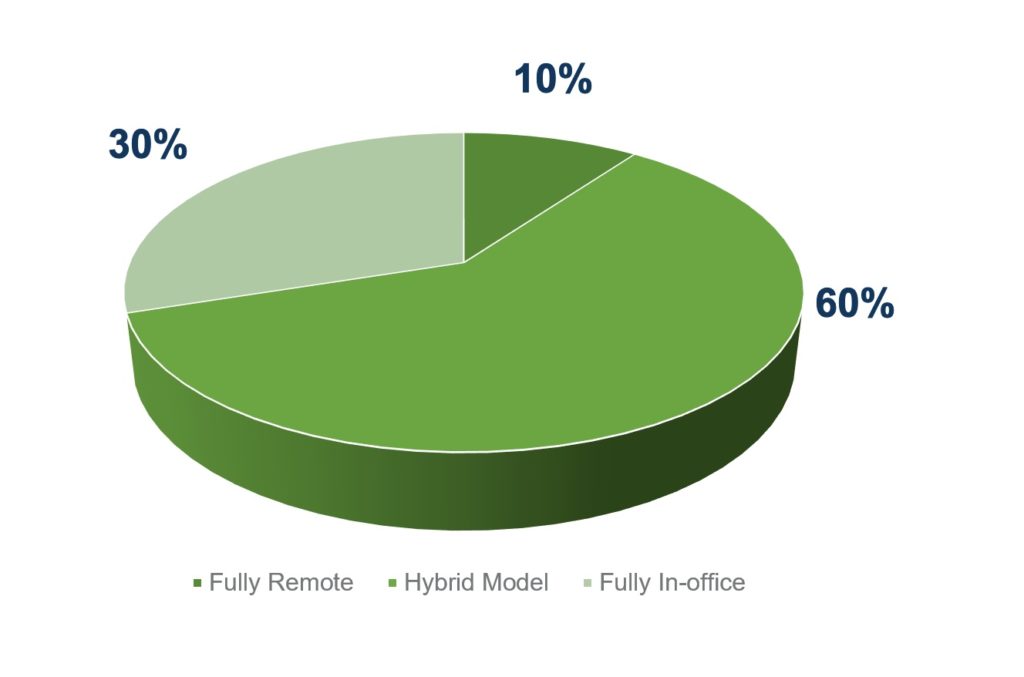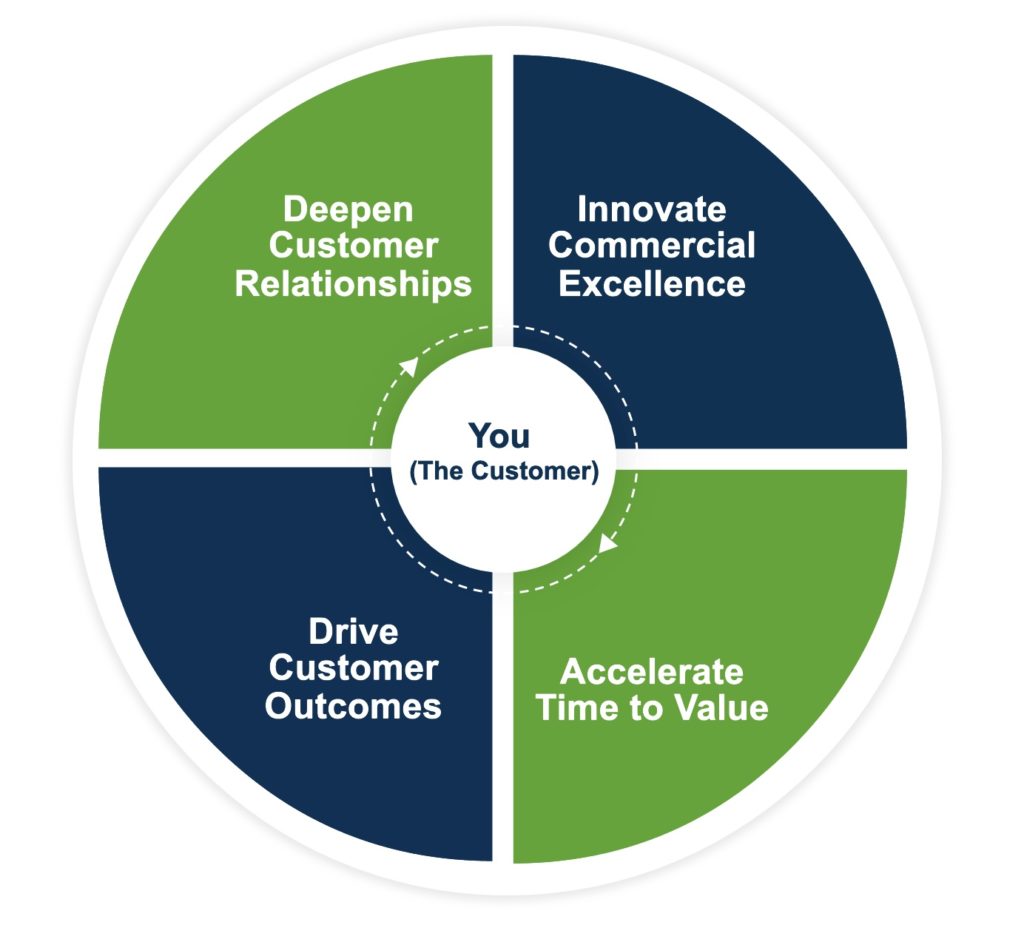
There were hopes, as we moved into 2021, that it would be an improvement over the year before. That seemed like a reasonable expectation given the events of 2020.
As McKinsey put it before the past year began,
2021 will be the year of transition. Barring any unexpected catastrophes, individuals, businesses, and society can start to look forward to shaping their futures rather than just grinding through the present.
The next normal arrives: Trends that will define 2021—and beyond – McKINSEY
This was a laudable prediction, but it didn’t pan out exactly as hoped. The developments that took place in 2021, and the trends shaping the future, were part of what were recapped and analyzed at a recent Vendavo webinar, Looking Back and Ahead: Key 2021 Takeaways & Top 3 Predictions for 2022.
One conclusion? As in ’20 and ’21, there’s no “back to normal” in sight where the world will see “pre-pandemic levels” of nearly anything, especially as nations and economies continue to grapple with new COVID variants.
What did the past year deliver for our customers and their markets? In a word, uncertainty.
Disruption of Global Supply Chains
Combined with the pandemic, international events created a perfect storm that delivered supply chain issues that haven’t been seen in a very long time. Companies were faced with the need to find new ways to be agile in addressing them, like finding substitute products and dealing with the impact on shipping costs and timelines.
As of 2021, 68% of supply chain executives report that they have been constantly responding to high-impact disruptions over the last three years. And 67% report they have not had sufficient time to recover from a disruption before another high-impact event has disrupted their supply chains again.
Gartner Predict 2022: Supply Chain Technology
Renewed Inflation
It’s been 30 years since companies have had to deal with current levels of inflation. This is forcing many to adapt who have never had to manage inflation before. Nor is inflation going to simply go away: The short-term effects of the pandemic have metastasized into longer-term effects. Inflation and pricing are now in constant conversation, whether it’s in regard to automobiles, groceries, subscriptions, or services: As businesses continue to navigate this new reality, there will continue to be price changes, and a need for better ways to manage them.
What started as a short-term disruption in shipments of automotive semiconductors is becoming a long-term problem that is driving average prices of new and used vehicles to luxury-car levels, fueling inflation fears and causing concern.
Inflation risk or profit engine? High car prices are both – REUTERS
A More Challenging Labor Market
It’s become a seller’s market for labor. Salaries are on the rise as companies compete for increasingly valuable (and sometimes scarce) human assets. While at the same time, employees are unwilling to tolerate what they consider to be poor treatment or are rejecting previous expectations of how they – and the companies they work for – should behave.
This competition has created broadened opportunities for the labor force, who now have greater control of their future. The Great Resignation was a sobering signal to many enterprises that things have changed, and the forced imposition of hybrid and flexible work situations has been another crucial transition.
Employers must take a data-driven approach to improving retention.
who is driving the great resignation – HARVARD BUSINESS REVIEW
Watch Key 2021 Takeaways & Top 3 Predictions for 2022
Watch Now
What Are the Keys to 2022?
If uncertainty was the byword of 2021, then the mantra to remember – and work by – in 2022 is agility and bold decisions. As our experts pointed out during the webinar, there are a series of inflection points at hand that companies need to be prepared to manage by becoming more nimble and assertive:
Hybridization
Organizational structures will be faced with even further changes in terms of how they accomplish work, and will need to adapt new approaches and environments, such as hybrid working models.
Generation Z is now a part of the workforce, digital natives who won’t put up with antiquated or poorly designed systems and offerings. For knowledge workers, flexible working environments are an absolute minimum if you want to engage and retain them.

Only 10% of firms will shift to a fully remote model, and 30% will go back to a fully in-office model. The remaining 60% of firms will shift to a hybrid model.
2022 Predictions – Forrester
Data is Ubiquitous
There’s now more data available to B2B sellers (and buyers) than ever, and there will be even more of it in the not-so-distant future. Companies must position themselves to wring maximum value and opportunity from it as new dynamics emerge:
- Selling and Sales teams are shifting to better accommodate an environment where business travel is scarce, connectivity is immediate, and the expectation for self-service is taking hold among buyers.
- The Internet of Things (IoT) is being applied to the supply chain, and has the potential to improve factory workflows, materials tracking, and optimize distribution. But the effective, efficient integration of IoT systems and the data they provide must be integrated across commercial capabilities and wider business functions as a critical prerequisite for success. Even though a good many organizations acknowledge this success factor, they rarely act upon it.
- Subscription-based models are increasingly prevalent across many industries, as it drives customer stickiness and multiples, but it’s hard to accomplish: You, as a seller, need to be able to capture and interpret quality data, and must understand risk/cost exposure and the danger of overselling to customers.
Organizations Must Deliver Digital-First, Connected Experiences
To drive productivity and retain talent, these seamless digital experiences will be absolutely essential for companies. Leveraging data to deliver on this promise will need to be a practice that pervades the organization.
The role of the Chief Digital Officer will fade away, in time, because every senior leader will also be a digital officer. So will “digital transformation” roles. Monetizing data is the key to commercial transformation, and will require:
- The ability to collect, wrangle and sort data
- The ability to gain insights from that data
- The construction of commercial models to make use of it
According to Accenture, “90% of all business strategies are expected to explicitly mention data as a crucial success factor by 2022.”

Speed and Scale are Increasingly Vital to Transformation
Bain recently conducted a study to discover what the top drivers were for corporate digital leaders. They found that speed and scale are both now important: “While digital transformations have historically focused on speed,” they explained, “scale is rising as an imperative.”
The most common important driver for digital leaders was the need to make fast decisions, while the ability to move from experiment to scale was a close runner-up. This reinforces the new reality: That IT has now become democratized across organizations, and technology is no longer an operational bottleneck – it’s now becoming more of an essential enabler for success.
Driving Value in 2022 and beyond
Software is a critical part of the infrastructure that can deliver the agility needed to extract the maximum value all of the situations and opportunities above by converting data into context for better decision-making. The more data – and as we’ve mentioned, there will be a lot more data – the better, especially for the new generation of AI and machine learning-enabled solutions.

In picking the right solution and partner to take full advantage of the trends in the offing, companies will need to hold would-be providers to a high standard in terms of what they’re able to deliver.
In Vendavo’s case, we’ve helped customers weather the storms of 2020-21 thanks to a commitment to deepening customer relationships into true partnerships, innovating Commercial Excellence, driving superior customer outcomes, and accelerating time-to-value.
To learn more about the trends that will be impacting business in 2022 and how to respond to them, watch the on-demand webinar.